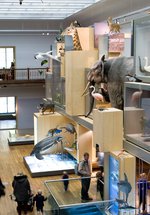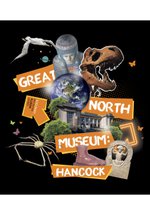Voyage & Home: Ostracod Odyssey
Peer into an enormous virtual petri dish and examine awesome ostracods on a vast scale.

Dates
Until 21 August 2022 (historic exhibition)
About

Peer into an enormous petri dish, magnified as if under a giant microscope, and examine awesome ostracods on a vast scale. The story of a local science hero is revealed and his knowledge in exploring contemporary climate change research unlocked.
Ostracods are tiny shrimp-like crustaceans that are an important part of marine and freshwater food chains. They’re tiny but essential parts of the aquatic ecosystem. We know ostracods are sensitive to changes in their environment, and can use them to study these changes.
The 19th century Brady collection contains approximately 6,000 specimens, of which about 4,500 are marine invertebrates. It is of great local historical importance as well as being a scientifically valuable resource. George Brady named and described many new ostracod species from the first scientific expeditions of the oceans. He noticed patterns in the diversity and distribution of ostracod species in the samples he was sent from around the world.
Brady’s work provides the first detailed overview of global ostracod populations, and is an important tool in the study of how they have changed over time.






